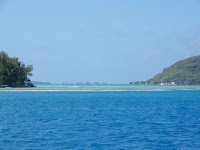Hello Again
 |
| Niuatoputapu |
 |
| Turtle in the lagoon |
It is just an overnight sail of 190nm to reach the most
northern islands of Tonga, the Niua Group. The group is made up of three small
volcanic islands. This definitely has not been one of our better legs. We lost
the wind yesterday afternoon and have to motor sail. I had my fishing line out,
but no luck on that front. Again I am convinced these waters have been
over-fished. Also there was an incredible amount of weed about. Alec needed to
clear the props on more than one occasion. The following afternoon we motor
into a very well protected lagoon on the north-western side of Niuatoputapu.
Like most lagoon passes one would not attempt this in bad light or rough
weather. The channel is winding with some of its markers broken off at the
high-water mark, but with care we make it safely to the excellent anchorage.
History: Like Samoa,
Tonga was also first settled by the Lapita people some two to three thousand
years ago. Carbon dating of their pottery
has shown this.
 |
| SHAMAL in Niua Lagoon |
 |
| Fuel Station |
Tonga had its first king sometime in the middle of the 10th
century AD. Since then around 40 men have held this title. The four main island
groups, from north to south, Niua, Vava’u, Ha’apai, and Tongata’u, were
discovered by Europeans at different dates between 1616 and 1781. The Kingdom
is made up of about 170 islands, some being high volcanic and others low coral
islands.
The population is around 106,000 people. It is thought that
just as many Tongans are living abroad, mostly in New Zealand, Australia and
the United States. They are a very religious nation, and Sunday sees the whole
country nearly coming to a standstill. The kingdom became an independent state
in the mid-1970 after being under British protection since 1900.









